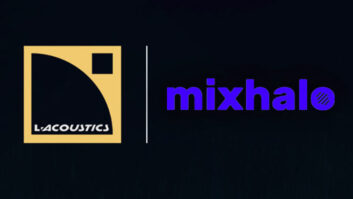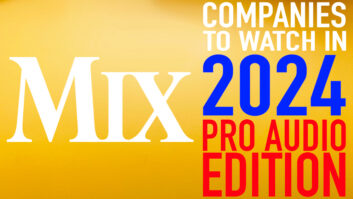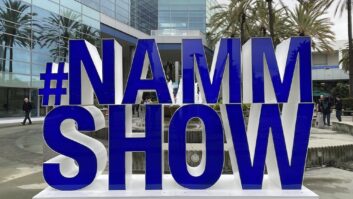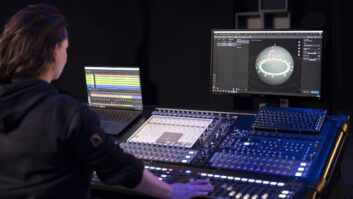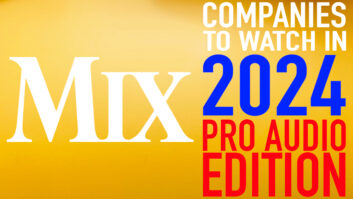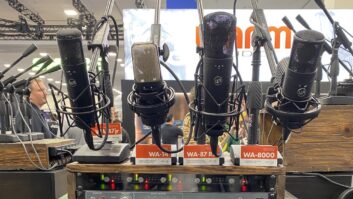
The highly-anticipated sequel, Transformers: Revenge of the Fallen, opens in theaters this Wednesday, June 24. All this week, the Pro Sound News blog goes ‘behind the scenes’ with the film’s sound crew, starting with today’s article. In the ensuing days, you’ll find in-depth interviews with audio principals, explaining what it took to add thunder to the cinematic spectacle.
By Steve Harvey.
Culver City, CA–The final mix for Transformers: Revenge of the Fallen at Sony Pictures’ Cary Grant Theatre paired effects re-recording mixer Greg Russell with dialog and music re-recording mixer Gary Summers for the first time. Helping distill the soundtrack for one of the most anticipated movies of the summer were co-supervising sound editors Ethan Van der Ryn and Erik Aadahl. Regular dialog and anything with a vocal component fell under the purview of supervising dialog editor Mike Hopkins, who worked with Van der Ryn and Aadahl on robot vocalizations that required substantial processing.
Gary Summers
dialog/music re-recording mixerGary Summers, dialog and music re-recording mixer

Although Summers was working for the first time with Russell on ROTF, it was a reunion of sorts, he said. “Ethan [Van der Ryn] called me and told me he’d like me to mix the music and dialog on the film–I’d worked with Ethan at Skywalker. I went to New Zealand and worked on [Lord of the Rings films] The Two Towers and The Return of the King; that’s where I met Mike [Hopkins].”
According to Summers, “The music is really driving and the effects track is very detailed. Because you have this animation and special effects that you need to sell, sound is so powerful for doing that. It brings a sense of reality to it all and engages the audience into the whole story. Michael sees that; he sees how powerful it can be and how it can bring these animated things to life, and give them a sense of weight and power and character.”
But, he noted, “Michael Bay has said, ‘I’ve got to hear the dialog.’ So everything comes very separated. We’re out to 60 channels of music. All the orchestral elements are separate, all the percussion–high, mid, and low–so in places, if we need to, we can remove elements to bring more clarity. There’s a lot of robot stuff, running and shooting. If you have all this percussion in there, it tends to become a cacophony. Or it may be that Michael will say, ‘I want music to drive this,’ and the effects come down.”
With so much material to work with, the soundtrack could be very dynamic, he observed. “There are a lot of opportunities in this film to play, to be a little bit bold, to play the effects–because it’s such a lush, rich track. Then, when the music does come in, it makes a much bigger statement.”
He continued, “Everybody wants the track to be as strong as it can be–whatever it takes to do that, everybody is open to it. [Score producer] Hans Zimmer’s team will score pieces where [Bay] is not sure if he needs it. He hasn’t heard the full effects tracks for a lot of the sequences. Once you get [the music] in with the dialog, you may find it doesn’t need it, it carries it on its own. Then there are other places in the film where, without music, it falls flat.”
For example, he offered, “The real heart of the movie is the boy and his parents, the fact that they get split up. There’s a really beautiful cue [Jablonsky] did for that. Also, the theme for Optimus and the backstory; they play the Autobots theme, that’s really nice. Those kind of things, you need to make strong so you have that sense of soul and heart as well as battles and robots.”
Technology now allows changes to be made in the music track very quickly, he said. “The great thing about Hans’ group is that they have the ability to generate these mocks of the orchestra. It’s very, very high quality. In the past, it would be temp music from another movie. Here, with synthesizers and very high quality samples, they can quickly compose the music. Michael can hear it and say, ‘I want it without that guitar’ or, ‘Can you put a thematic element here?’ The next time he screens it, it’s there. That was something you could never do years ago. We can already start to mix against it and know where it’s thick and know where we can embellish it with effects. When the real cue shows up, it’s only better, with more clarity, more transparency.”
As might be expected on such a busy action film, some of the production dialog needed work. Summers explained, “There are a lot of things going on in the environment. There’s gunfire in the battle scenes, and things like that, so they’ve done a fair amount of looping. Michael Bay tends to resist that, but he’s warmed up to some of it. When you get it in context, you realize that for the clarity of it, and if the performance is as good, then you can make it work.” And, as Summers pointed out, “That’s my job, to fit it in so you won’t know.”
